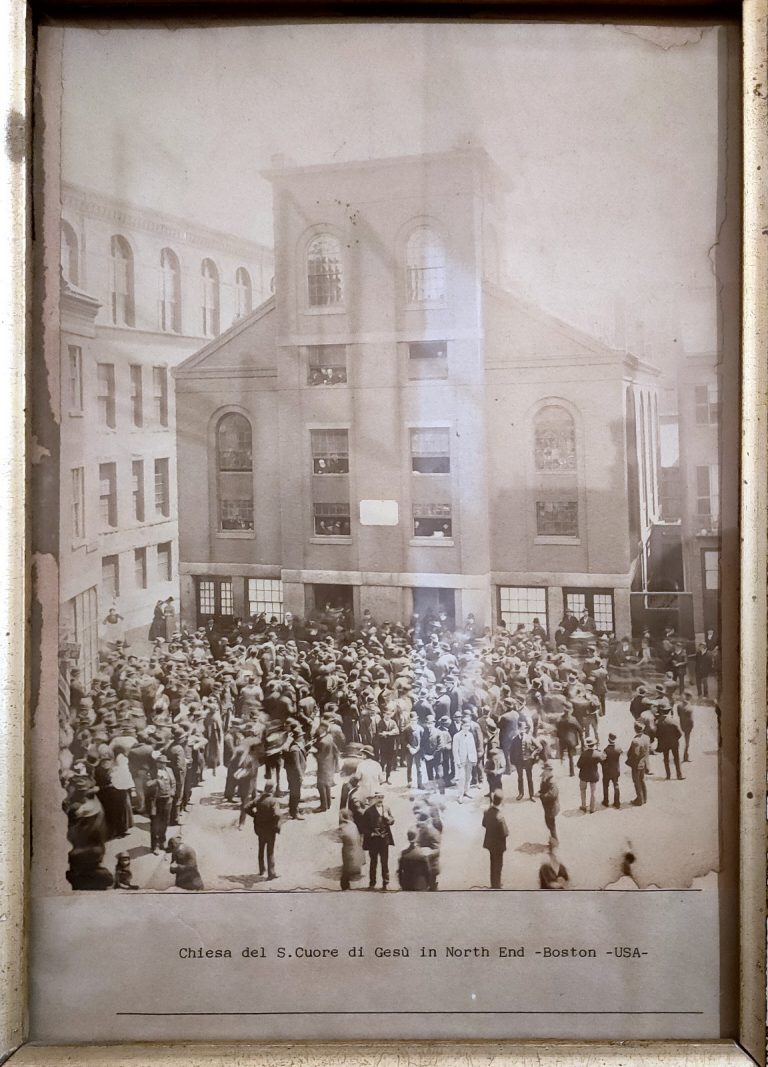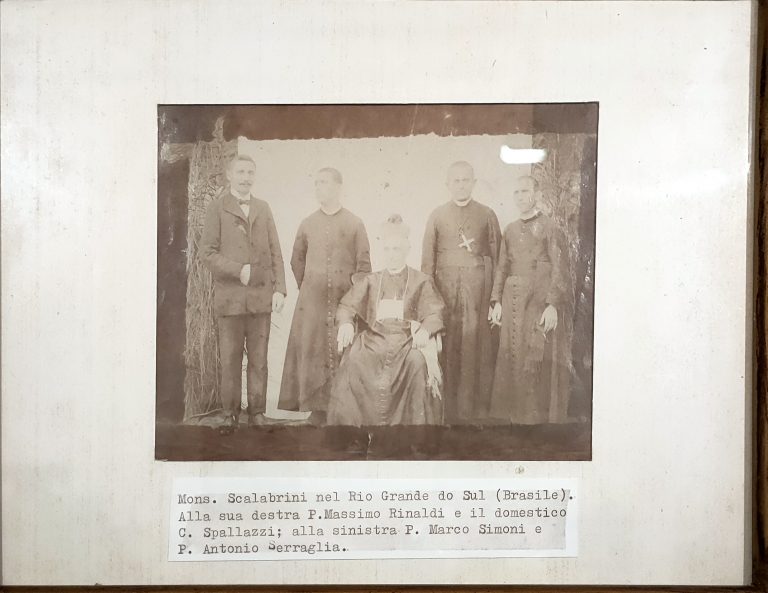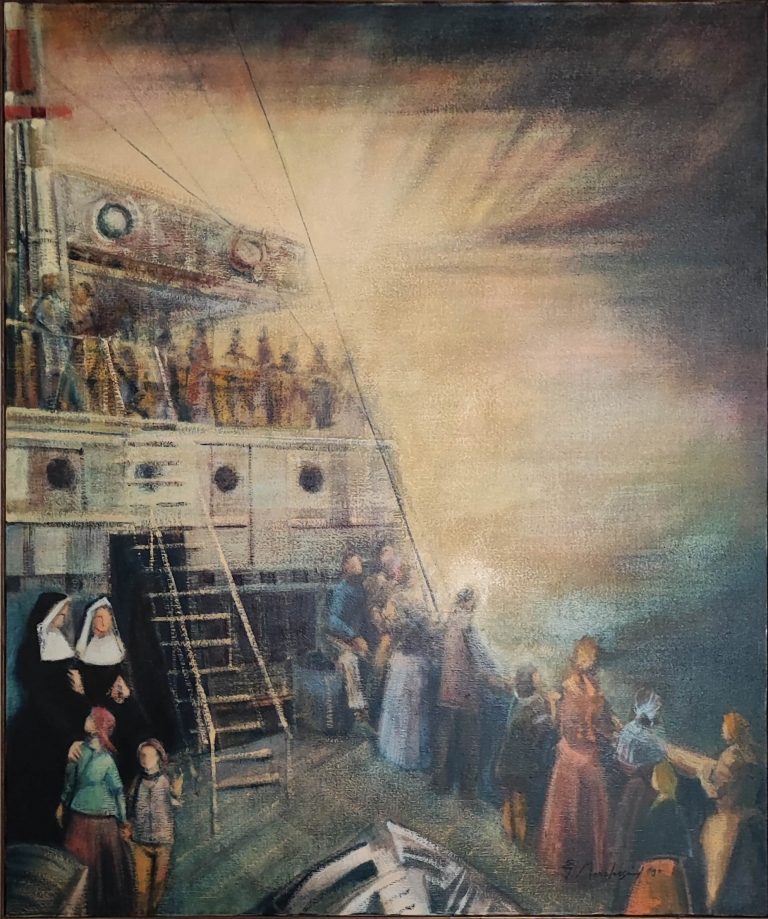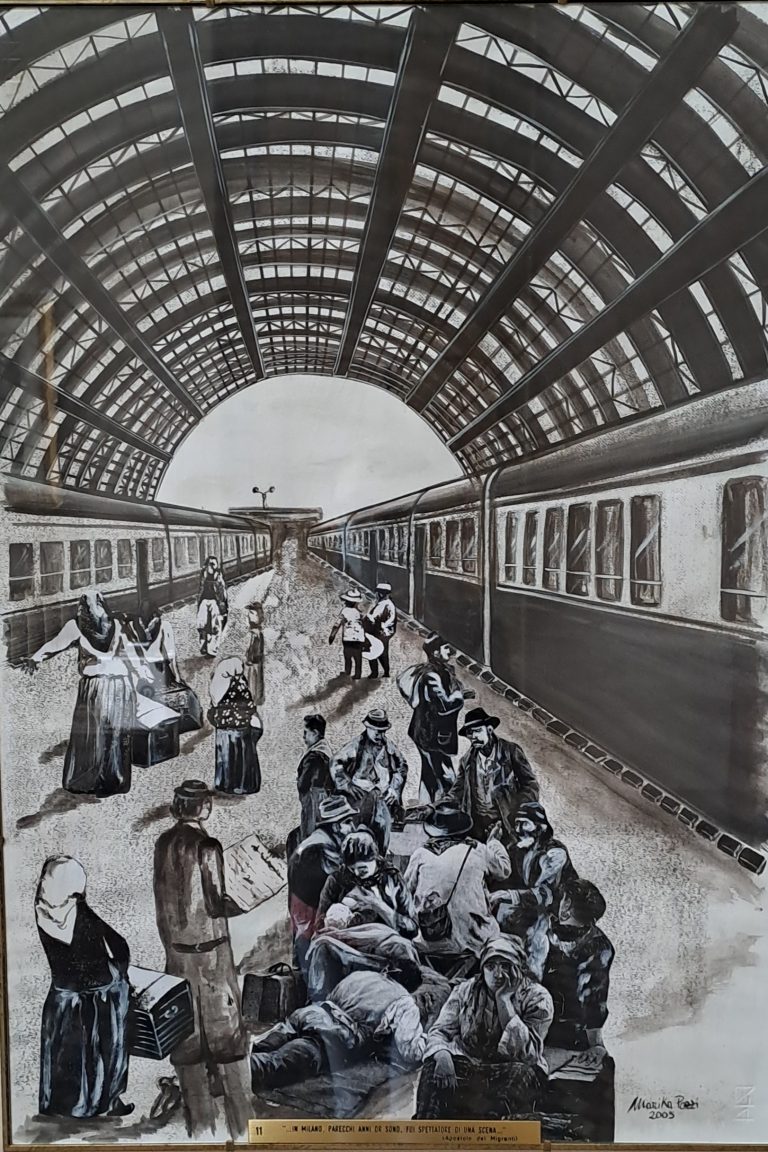Giovanni Battista Scalabrini: a holy bishop, from Piacenza to the world
The MES-Museo dell’Emigrazione Scalabrini
The MES-Museo dell’Emigrazione Scalabrini
MENU
The MES-Museo dell’Emigrazione Scalabrini, inaugurated in December 2019, is structured as a multimedia, interactive and multi-sensory itinerary. The multimedia contents lead the visitor to an in-depth exploration of the theme of migration, providing an understanding of its historical development, the socio-political dynamics from 1870 to the present day, and the solutions that Saint John Baptist Scalabrini (1839-1905), defined as the Father of migrants, was able to put into practice, showing how his action is still alive in the world, thanks to the work of the religious and lay congregations he founded.
The migratory experience is presented in its salient moments: from the departure with the sufferings linked to the detachment from one’s loved ones and one’s own land, to the ignominious work of the “human flesh merchants”, as Scalabrini himself defined them, to the dangers of the journey, to the difficulties of integration in a foreign and often hostile country that forced them to accept the most humiliating and degrading jobs and to face all sorts of sacrifices to give a future to their families and to help the relatives who remained in their homeland
The MES intends above all to shed light on the Italian emigration story, which is all but forgotten at a time when the drama of entire generations fleeing poverty and misery, war and violence, exploitation and persecution is becoming more acute every day.
The exhibition is divided into four rooms.
The first tells the story of migration, in particular that of Piacenza and Emilia-Romagna, starting from the second half of the 19th century, through images, sounds, texts, taken entirely from the archival repertoire of the Mother House of the Scalabrinian Order, projected in a circular space. The audio quotations by Giovanni Battista Scalabrini allow for an immersive experience that exemplifies the hardship experienced by those who chose to emigrate. The room leads to a small room similar to what one might encounter in a typical rural house in the Piacenza area – with a large fireplace, a straw mattress, suitcases ready for departure. Testimonies, images, unpublished documents tell the story of the lives of people who, due to a malaise that was no longer sustainable, chose to seek their fortune elsewhere with the means then available.
The second room presents the experience of the journey, starting with quotations from travellers of the time, which give a clear idea of the enormous difficulties faced by those seeking a better future for themselves and their families.
The visitor is welcomed by the reconstruction of a ticket office of the time and the large-scale reproduction of the Giulio Cesare, one of the fastest transatlantic ships of the time. Here the ticket is distributed and, after the stamping and ritual checks, one physically enters the belly of the ship, i.e. an uncomfortable and dark third class furnished with iron beds. The experience of the voyage is relived through a porthole placed in the centre of the room, on which all the stages of the voyage scroll by: from the departure from the port of embarkation, to the voyage on the open sea, with the songs and pastimes to make that interminable journey bearable, up to the arrival in the port of Ellis Island, with the gaze turned towards the Statue of Liberty.
The story continues with the section “Italians in the world and Scalabrini’s vision”, which shows what our compatriots had to endure once they arrived in Europe and America. The discrimination and difficulties they were forced to face did not leave Giovanni Battista Scalabrini insensitive, who felt an urgent duty to give immediate support to the migrants’ families.
Crossing the threshold of the third room, the visitor is greeted by a hologram of the Bishop, who recounts his vision of the ongoing migratory phenomenon and the choices he made to help these people. The metaphor of the bishop’s intense life is translated by a filing cabinet, inside which there are multimedia video supports and objects of great historical-testimonial value, displaying the most significant stages of his work. Inside old cardboard suitcases, videos narrate Scalabrini’s two trips to America.
The itinerary ends with the room dedicated to migration today, through the data made available by the Scalabrinians present with missions and homes all over the world. A series of video-photographic portraits of immigrants in Piacenza over the last twenty years allows us, through touching testimonies, to understand the action of the Scalabrinian Fathers in the direction of the “culture of welcome” towards a “common home”.
Please , update your browser





